
Proper care of the furniture
When buying a furniture, do you spend some time searching for the best options? Do you buy it with the belief that it will serve you for decades? To make this happen, we have prepared some recommendations for you on how to take care of different types of surfaces and what to avoid. In general, the furniture does not do well around harmful effects, such as the proximity of radiators, direct sunlight and humid environment. Definitely do not overlook even small defects, such as loose screws, you can prevent more damage by fastening them in time. Products with such neglected care are not covered by the warranty, as well as other product defects caused by normal wear and tear, improper storage, self-transport, handling, improper assembly by the consumer and improper use.
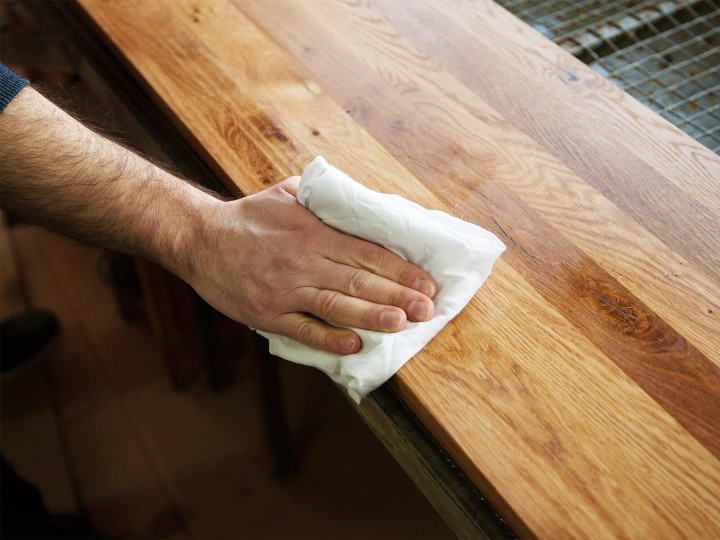
Wooden furniture
How to do basic maintenance?
Are you looking for a gentle way to remove dust from wooden furniture? All you need is a soft flannel cloth or soft duster. To maintain the paintwork and remove dirt, reach for a soft damp cloth or wood care product, eg PRONTO.
Solid wood and veneer
The veneer tends to dry out, so we recommend placing it best in an environment with 32 to 35% relative humidity to avoid deformations of the shape and surface of the wood. The same conditions apply to plywood.
UV varnish or PU varnish is used for the surface treatment of wood, treat these products with a slightly damp cloth and polish. Finally, don't forget to wipe the furniture dry. We do not recommend placing sharp metal or hot objects, cigarettes, etc. on a wooden surface, as this may cause damage, overheating the surface and thus its deformation.
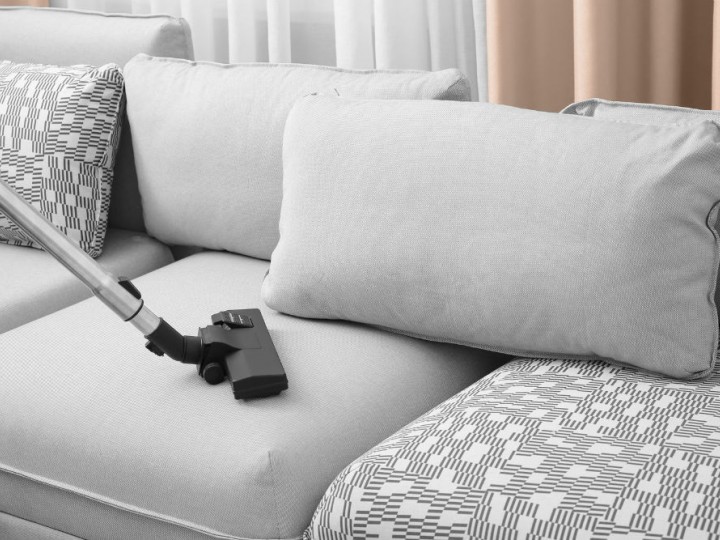
Upholstered furniture
The quality and durability of the upholstery is not determined by the price of the coating material. It depends on the composition of the material, the method of production, or the use of special technology of surface or bottom treatment of the coating material. Coating materials must withstand high weight loads, abrasion movements, dust, light, heat or sweat, which can be very aggressive. Each upholstery requires different products and a different way of cleaning, so it's good to know what care is best for your seat.
If upholstered furniture includes double-sided pillows, we recommend rotating them regularly to ensure even wear. Tap the back pads, where a soft padding is used, regularly to prevent deformation.
Do not expose the furniture to direct sunlight. A curtain, blinds or awning, for example, will help you with this. Although today's products are highly resistant to light, there is no coating material that can withstand sunlight for a long time and does not change the original shade.
How to do basic maintenance?
Regular maintenance of upholstered products consists in removing surface dust and small impurities. Use only a low or medium power vacuum cleaner equipped with an upholstered material attachment. Before using cleaning agents, we recommend that you first test the action in a less visible place.
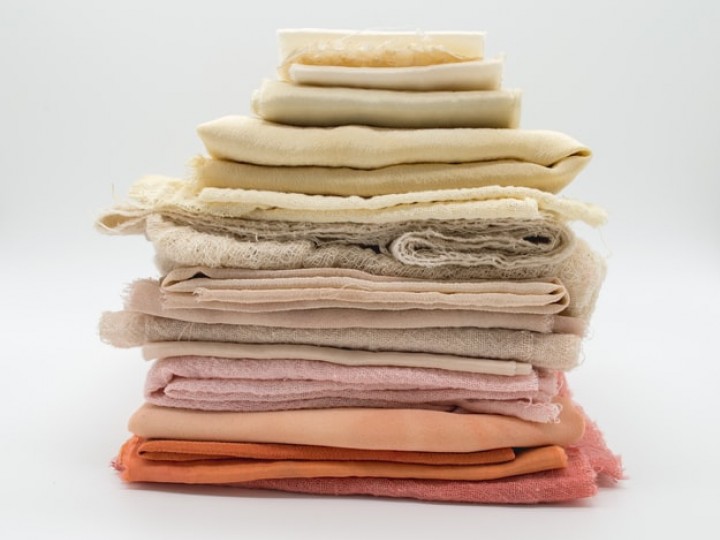
- FABRICS-
How to do basic maintenance?
- Use only pH-neutral agents. When cleaning, it is important to completely wash the detergent (surfactant), their residues lead to faster re-soiling. We recommend leaving thorough and full-area cleaning to a specialized company.
- If a stain appears on the textile cover of the sofa, remove it as soon as possible. If spillage occurs, aspirate the liquid first by applying clean white cloths or paper towels. Use a blunt flat object, such as the edge of a steel spoon, to remove dry stains. If the dried dirt is not removed, slightly moisten the area and repeat the procedure. Most of the dirt can then be removed with a soft absorbent sponge or white clean cotton cloth using a lukewarm solution of neutral soap. Wipe off the dirt with gentle pressure in a circular motion, moving from the edge to the center of the stain to prevent it from enlarging. Clean the fabric with water so that no visible cleaning edges are formed after drying. Make sure that wet cleaning takes place on the surface and that the fabric does not get wet. Finally, vacuum the entire area with a vacuum cleaner.
- In case of heavier stains, use a textile cleaner or dry foam for upholstery and carpets.
- Once a year, we recommend having the entire upholstery cleaned by a specialist company using a neutral detergent. However, the frequency always depends on how you use the product.
Tips, Tricks and Warnings
- Do not leave rough objects on the fabric, such as jeans rivets, hard seams or pet claws.
- For some fabrics, friction may occur due to the friction of the cover with parts of clothing or various blankets. The formed lumps can be easily removed with special lint removers.
Never use for cleaning:
- Violent methods and means. Do not use sharp objects, brushes, sandpaper, unsuitable aids and tools that could permanently damage the product.
- Do not use products containing petrol, trichlorethylene or other solvents. There is a risk of irreversible damage to the fabric and the inner layers of the upholstery.
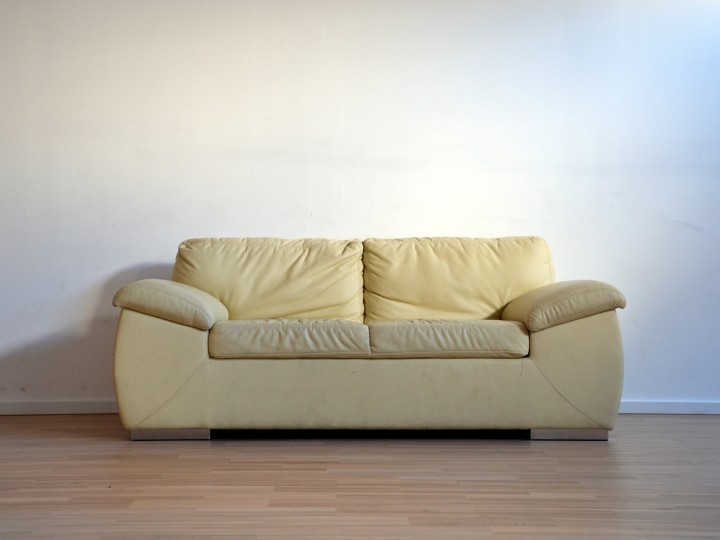
- LEATHERETTE-
Leatherette (sometimes called Eco-leather) as a 100% synthetic material, does not require special care and maintenance. We can say that similar rules apply here as for the maintenance of upholstery fabrics, but it is advisable to regularly use special leatherette cleaners and take the following tips to heart.
How to do basic maintenance?
- After cleaning the leatherette with cleaning solutions, allow the upholstery to dry thoroughly before using it again.
- Regularly remove surface dust with a lightly dampened cotton cloth or a vacuum cleaner with the upholstery attachment set to low power.
- Avoid exposing the furniture to direct sunlight. The use of curtains, blinds, awnings, etc. is recommended. Although today's products have high resistance to light, there is no coating material that would withstand sunlight for a long time and not change the original color.
- Complete cleaning and impregnation of leatherette upholstery with cleaning agents designed for this purpose, min. 2x per year (according to the intensity of use). This will keep it soft and extend the life of the leatherette.
Tips, Tricks and Warnings
- Never use sharp objects, brushes, sandpaper, unsuitable aids and tools to clean the leatherette, which could irreversibly damage the product. Also avoid products that contain gasoline, trychlorethylene or other solvents. There is a risk of irreversible damage to synthetic leather and the inner layers of the upholstery.
- Damage is, of course, best to prevent. The leatherette surface does not include rough objects such as jeans rivets, hard seams or pet claws.
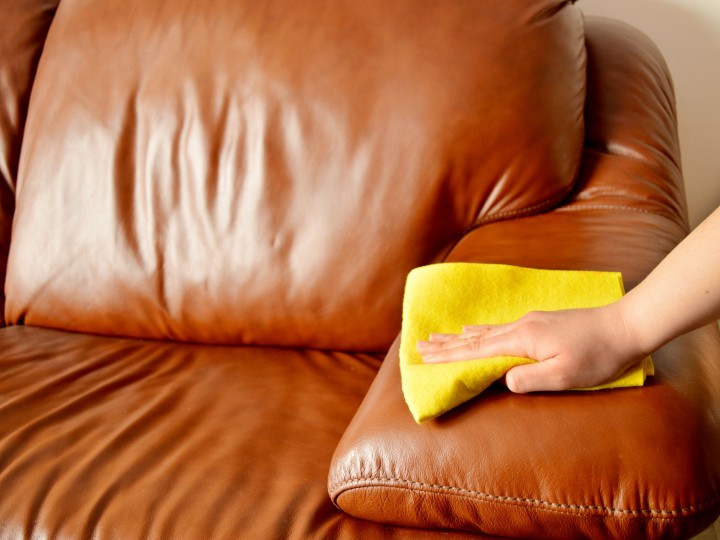
- LEATHER-
Leather is a natural material of animal origin. In order to preserve its beauty and natural appearance for as long as possible, we recommend that you regularly take care of it and follow a few principles.
Natural leather has a much larger waviness than, for example, most textiles. The extent of this absolutely characteristic phenomenon varies from model to model and cannot be prevented, so it does not constitute a quality defect. The quality and durability of natural leather can also be affected by the surrounding climate, the effect of body sweat (it can lead to surface damage and peeling of the leather), the method of maintenance and treatment.
How to do basic maintenance?
- Use only products intended for the treatment of natural furniture leather (leather).
- Always test all leather cleaners in concealed areas according to the instructions to see what changes this will cause. All products use large-area from seam to seam, stains that penetrate deeper into the leather do not try to remove with strong friction. This could damage the surface.

Plastic furniture
Plastic furniture is, among other things, popular for its low maintenance. Unfortunately, cheaper products tend to turn yellow due to the sun's rays, so a protective UV varnish is used in production, but it cannot be renewed.
Plastic furniture is also characterized by the deposition of dirt in the pores of the plastic, so the furniture turns gray over time and the dirt is difficult to remove. This can be prevented by purchasing products with a special surface treatment, which consists in applying nanocrystals that prevent dirt from settling on the surface.
The general rule also applies here - do not expose plastic furniture to long-term exposure to water or water vapor, radiant heat and direct sunlight and UV radiation. In the event of a complaint, the warranty cannot be covered for product defects caused by normal wear and tear or improper storage and incorrect use.
How to do regular maintenance?
- We recommend cleaning light soiling with paper towels, soft clean textile towels or a sponge and warm water, or a microfiber cloth will suffice.
- If you need to use detergents, we only recommend liquid or core soap without abrasives.
- After wiping, it is necessary to dry the surface with an absorbent paper towel or a micro-fiber cloth - we prevent the formation of maps, which are most often created by cleaning with organic solvents in combination with cold water and reusable wipes.
- The most problematic place is always the connection between the board and the edge or the board and the unplayed parts of the furniture, especially from the underside, which stands on the floor. If you get water on this joint, it is necessary to wipe it dry as soon as possible and dry it.
- Do not clean the product with abrasives (abrasive and polishing pastes, powders and other substances capable of scratching the surface), organic solvents or other aggressive chemicals. If you are not sure about the suitability of the detergent, then do not apply it or try it in a less visible place first.
Attention!
Never use: abrasives or abrasives (abrasive powder, cleaning sponges with a rough side, bleaches, cleaning agents with strong acids and strong acid salts, steam cleaner
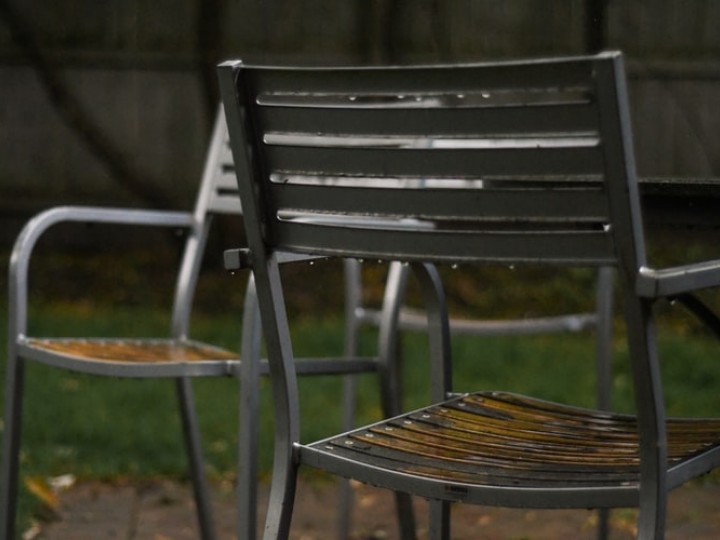
Metal furniture
We will please you - metal is not a material that requires too much of your attention, but it certainly deserves some care.
How to perform routine maintenance?
- If you have bought furniture with a special surface treatment, it will not only ease your worries. The surface treatment protects the furniture against corrosion, so thanks to it you can leave the furniture outside all year round without being damaged by heavy rain or snow or frost.
- The covers that cover the table and chairs are a great help, and you don't have to think about hiding the furniture. In addition, after the rain, you just take off the packaging and you have completely dry furniture at your disposal.
- You don't even need special products to remove dirt and dust. All you need is a soft cloth, warm water or dishwashing detergent.
- If you want to prevent creaking of metal furniture, we recommend lubricating the joints once a season in the case of lower quality furniture.
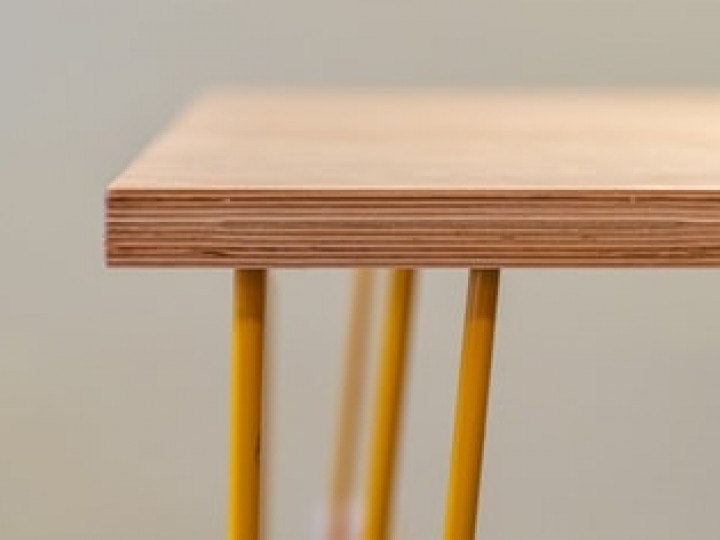
Laminate
Thanks to its durable and hygienic surface, laminated LTD furniture (resin-bonded chipboards, surface-pressed with a decorative foil lamination) does not require any special care; the surface is generally easy to clean.
How to do basic maintenance?
- Remove dust from the furniture with a clean, soft, non-abrasive duster. Clean with standard detergents followed by wiping dry. Keep in mind that the most problematic place is always the connection between the board and the edge or the board and the unpaved parts of the furniture, especially from the underside, which stands on the floor. If you get water on this joint, it is necessary to wipe it dry as soon as possible and dry it.
- Do not clean the product with abrasives (abrasive and polishing pastes, powders and other substances capable of scratching the surface), organic solvents or other aggressive chemicals. If you are not sure about the suitability of the detergent, then do not apply it or try it in a less visible place first.
- Do not expose the product to long-term exposure to water or water vapor, radiant heat and direct sunlight and UV radiation.
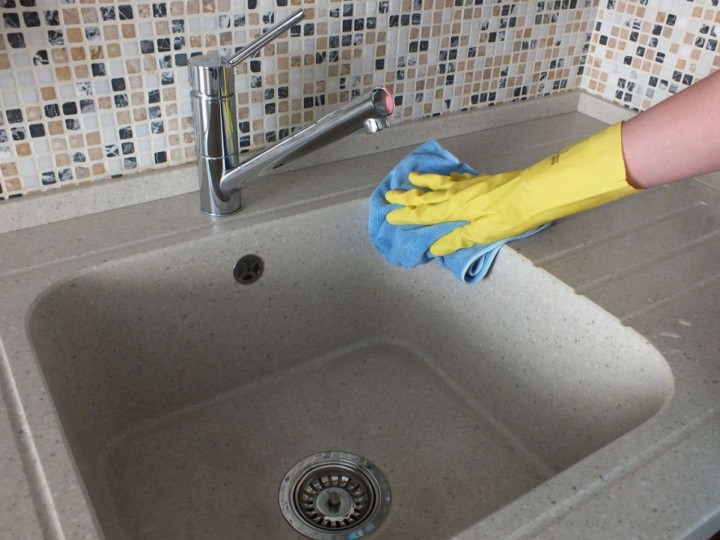
Artificial stone - CORIAN®, STARON® etc.
Like all decorative materials, CORIAN / STARON will decorate your interior for a long time if you give it the right care. The board made of this material will have a satin sheen during installation, but during use it will usually acquire a softer and silkier appearance.
How to do basic maintenance?
- The advantage of the CORIAN / STARON material is that liquids cannot soak into it, but it is still best to wipe off all stains as soon as they appear. Just use a damp cloth and fine cleaning sand or a regular household degreaser. Always clean in a circular motion.
- At least once a week, give your sink careful maintenance and remove any grease or cooking residue with a degreaser. Create a mixture of liquid household bleach (3/4) and water (1/4), apply it to the sink and leave it on for several hours, even overnight. The exposure time should not exceed 16 hours. In the morning, wash the surface with warm water and dry with a soft cloth.
Attention! CORIAN / STARON is not a self-cleaning material.

Natural stone
Natural stone is one of the popular luxury materials that bring elegance to the interior. Lifetime depends not only on the type of stone and its surface treatment, but mainly on care. Regular cleaning should be a matter of course. Each type of stone has different properties. Care also depends on the hardness, porosity or resistance. For example, granite can withstand temperatures of up to 250 °C, so you can put hot dishes on it. Together with quartzite, basalt and slate, it is more resistant to more aggressive and acidic cleaners. However, avoid abrasives under any circumstances. Caution and impregnation pay off, especially with the popular marble. It is very porous, so its surface should be sealed with impregnation and then varnish. He hates contact with juices, milk, vinegar or even wine. Luxury onyx has similar properties.
How to do regular maintenance?
- Remove dust and dirt with a dry or damp soft cloth. You can use water, a neutral soapy solution or special cleaners designed for natural stone. Avoid abrasive (e.g. cleaning sand) and aggressive products that contain acids or ammonia and rough brushes.
- Lifetime can be extended by a protective layer in the form of impregnation, which protects against stains and liquid absorption. If you're going to do it yourself, make sure the impregnating agent is solvent-based. However, we recommend using professional services.
- Do not use any sharp or rough objects near stone slabs or other pieces and avoid contact with the aforementioned chemicals. For example, acids, lemon juice, vinegar or other aggressive substances can damage the surface. Marble, travertine or limestone are particularly susceptible.
- Also be careful when handling hot mugs or pots, the stone could crack. For example, use mats, coasters or other protective items.





